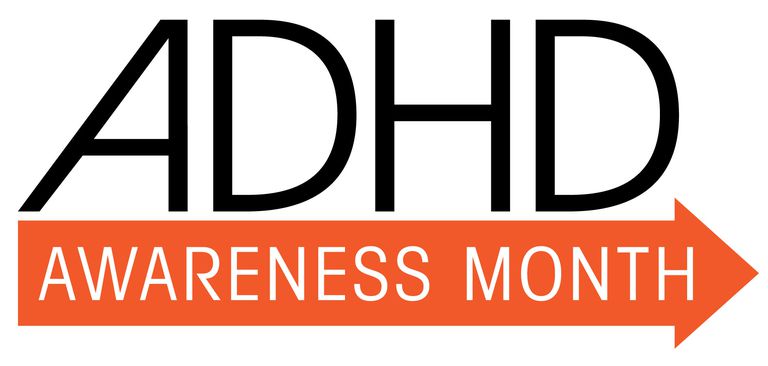Introduction
It’s ADHD Awareness Month, and this Straight, No Chaser discusses Attention Deficit Hyperactivity Disorder (aka ADD). To begin with, let’s set aside the jokes or casual nature often applied to ADHD. “Everyone” doesn’t have a “little” attention deficit disorder. It’s not something everyone can expect to outgrow. It’s not a response to a lack of discipline. Let’s clarify some things.

What is ADHD?
ADHD is one of the most common neurodevelopmental disorders of childhood. This suggests imbalance in the chemical makeup needed for perfectly performing brains. Although it’s typically diagnosed in childhood, it can last into adulthood. In fact, of the more than 6 million children with ADHD, about 2 million were diagnosed between ages 2-5.
Types of ADHD
- Predominantly Inattentive Presentation: There is difficulty organizing or finishing tasks, paying attention to details, or following instructions or conversations. Distractibility is high, as is the frequency of forgetting details of daily routines.
- Predominantly Hyperactive-Impulsive Presentation: Here’s where you see fidgeting and a seeming pressure to talk a lot. These individuals find it hard to sit still, doing homework or even finish meals. Impulsivity is frequent, resulting in habits of interrupting, grabbing and other signs of restlessness such as running, jumping or climbing. This can result in frequent accidents and injuries.
- Combined Presentation: The above two types are not mutually exclusive, and patients may exhibit characteristics of both. Furthermore, symptoms and presentations may change over time.
Signs and Symptoms
Children with ADHD may have trouble paying attention, controlling impulsive behaviors (may act without thinking about what the result will be), or be overly active. It is normal for children to have trouble focusing and behaving at one time or another. The symptoms can be severe and can cause difficulty at school, at home, or with friends.

A child with ADHD might:
- daydream a lot
- forget or lose things a lot
- squirm or fidget
- talk too much
- make careless mistakes or take unnecessary risks
- find resisting temptation difficult
- have trouble taking turns
- have difficulty getting along with others
Causes of ADHD
The cause(s) and risk factors for ADHD are unknown, but current research shows that genetics plays an important role. The following addition considerations are currently the topics of research:
- Brain injury
- Exposure to environmental (e.g., lead) during pregnancy or at a young age
- Alcohol and tobacco use during pregnancy
- Premature delivery
- Low birth weight
Myths about Causes
Research does not support the popularly held views that ADHD is caused by the following (although in the individual patient, these considerations may worsens symptoms):
- eating too much sugar
- watching too much television
- parenting
- social and environmental factors such as poverty or family chaos.
Diagnosis
There is no single test to diagnose ADHD. Other behavior problems can have similar symptoms. One step of the process involves having a medical exam, including hearing and vision tests, to rule out other problems with symptoms like ADHD. Diagnosing ADHD usually includes a checklist for rating ADHD symptoms and taking a history of the child from parents, teachers, and sometimes, the child.
Treatments
In most cases, ADHD is best treated with a combination of behavior therapy and medication. For preschool-aged children (4-5 years of age) with ADHD, behavior therapy, particularly training for parents, is recommended as the first line of treatment before medication is tried. What works best can depend on the child and family. Good treatment plans will include close monitoring, follow-ups, and making changes, if needed, along the way.
Allow me to restate that: medication is not the first line of therapy for ADHD.
Managing Symptoms: Staying Healthy
Healthy habits give all patients the best opportunity for the best possible outcomes, and that’s the case with ADHD. Here are some recommended health behaviors.
- Developing healthy eating habits such as eating plenty of fruits, vegetables, and whole grains and choosing lean protein sources
- Participating in daily physical activity based on age
- Limiting the amount of daily screen time from TVs, computers, phones, and other electronics
- Getting the recommended amount of sleep each night based on age
Get Help!
If you or your doctor have concerns about ADHD, you can take your child to a specialist such as a child psychologist or developmental pediatrician, or you can contact your local early intervention agency (for children under 3) or public school (for children 3 and older).
The National Resource Center operates a call center (1-800-233-4050) with trained staff to answer questions about ADHD.
ADHD in Adults
ADHD often lasts into adulthood. For more information about diagnosis and treatment throughout the lifespan, please visit the websites of the National Resource Center on ADHDexternal icon and the National Institutes of Mental Healthexternal icon.
Follow us!
Feel free to ask your SMA expert consultant any questions you may have on this topic. Take the #72HoursChallenge, and join the community. As a thank you, we’re offering you a complimentary 30-day membership at www.72hourslife.com. Just use the code #NoChaser, and yes, it’s ok if you share!
Order your copy of Dr. Sterling’s books There are 72 Hours in a Day: Using Efficiency to Better Enjoy Every Part of Your Life and The 72 Hours in a Day Workbook: The Journey to The 72 Hours Life in 72 Days at Amazon or at www.jeffreysterlingbooks.com. Receive introductory pricing with orders!
Thanks for liking and following Straight, No Chaser! This public service provides a sample of http://www.SterlingMedicalAdvice.com (SMA) and 844-SMA-TALK. Please share our page with your friends on WordPress! Like us on Facebook @ SterlingMedicalAdvice.com! Follow us on Twitter at @asksterlingmd.
Copyright © 2019 · Sterling Initiatives, LLC · Powered by WordPress








